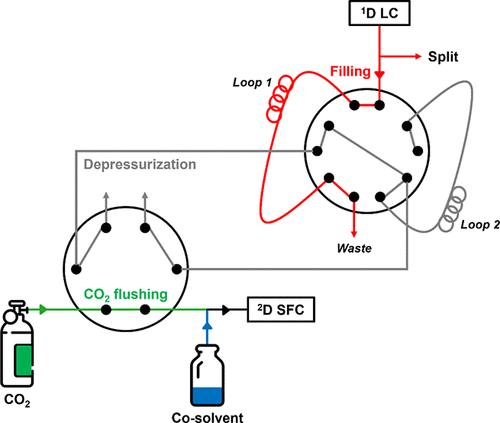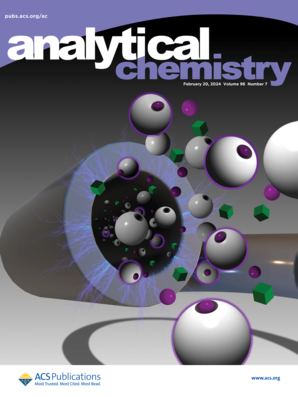Introducing a Depressurization Step in Online LCxSFC Modulation
IF 6.7
1区 化学
Q1 CHEMISTRY, ANALYTICAL
引用次数: 0
Abstract
New online LCxSFC valve technologies have recently been developed, based on the transfer of the first-dimension eluent either in the CO2 stream or in the cosolvent stream of the SFC dimension. While using the appropriate valve configuration greatly improved peak shapes, the reduction of the analysis time remained a challenge. A compromise between high first-dimension flow rate, to reduce gradient time, and low second-dimension injected volume, to limit injection effects, is to implement a flow split upstream of the valve. The so-called “modifier stream” configuration, in which the transfer loops are filled with liquid at all times, facilitates split integration as it resembles typical LCxLC interfaces. On the other hand, the so-called “CO2 stream” configuration must be selected when protic mobile phases are used in both dimensions. In this configuration, the presence of pressurized CO2 in the transfer loop forbided the use of splits so far to avoid sample pushback and loss through the waste outlet. The present work studies the feasibility of implementing a split when using the “CO2 stream” configuration. Modifying the interface by adding a second valve to control CO2 depressurization upstream of the loop filling phase has demonstrated conclusive results, avoiding gas escape and sample loss. Repeatability tests on a real sample application have been successful and highlight this new interface’s performance.

求助全文
约1分钟内获得全文
求助全文
来源期刊

Analytical Chemistry
化学-分析化学
CiteScore
12.10
自引率
12.20%
发文量
1949
审稿时长
1.4 months
期刊介绍:
Analytical Chemistry, a peer-reviewed research journal, focuses on disseminating new and original knowledge across all branches of analytical chemistry. Fundamental articles may explore general principles of chemical measurement science and need not directly address existing or potential analytical methodology. They can be entirely theoretical or report experimental results. Contributions may cover various phases of analytical operations, including sampling, bioanalysis, electrochemistry, mass spectrometry, microscale and nanoscale systems, environmental analysis, separations, spectroscopy, chemical reactions and selectivity, instrumentation, imaging, surface analysis, and data processing. Papers discussing known analytical methods should present a significant, original application of the method, a notable improvement, or results on an important analyte.
 求助内容:
求助内容: 应助结果提醒方式:
应助结果提醒方式:


